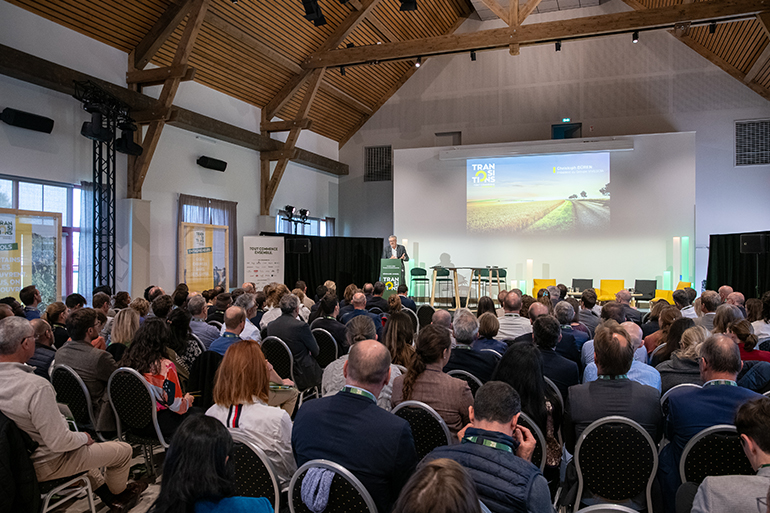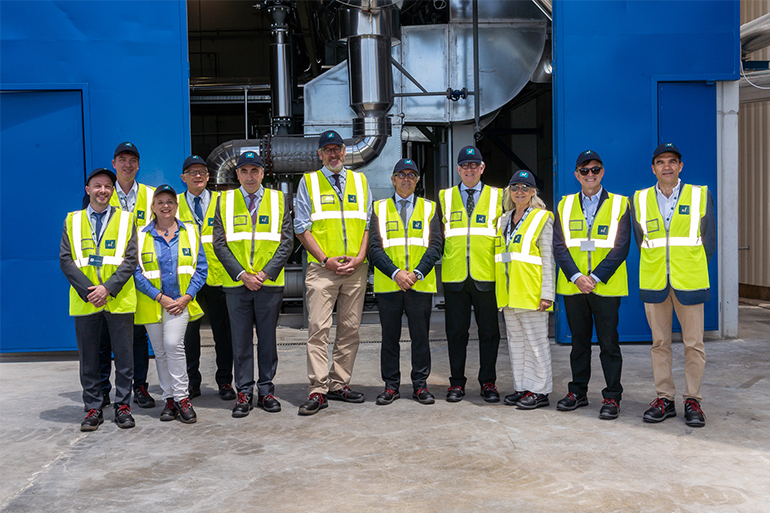
VIVESCIA to launch a free, simplified carbon footprint analysis for its cooperative farmers in April
With this new initiative, French grain cooperative group VIVESCIA is taking new steps to better prepare for the challenges of low-carbon agriculture and climate change.

VIVESCIA is the first grain cooperative to offer its members a large-scale simplified carbon footprint analysis, an approach that is fully in line with its new sustainable development policy launched in 2021. Although it is true that agriculture generates greenhouse gas (GHG) emissions, soil is also a natural carbon sink that is a key solution in the fight against global warming.
"At VIVESCIA, we work for our farmers and our customers. We must harness our agronomic expertise and the power of science to foster the development of farming methods that help the industry achieve carbon neutrality by 2050. Our unique position at the heart of the grain value chain means we have an important role as intermediary between our upstream Cooperative and our downstream processing businesses and partnerships with our customers. To combat global warming, the objective is clear: we must both help increase carbon storage in the soil and promote the agricultural practices of tomorrow – techniques that have a positive impact on biodiversity and our planet while allowing us to feed as many people as possible." Christoph BürenPrésident du Groupe VIVESCIA
Christoph BürenPrésident du Groupe VIVESCIA
With a free, simple and easy-to-implement methodology, specially designed by VIVESCIA’s agronomic teams in partnership with the start-up My EasyFarm, this diagnostic tool will enable an initial carbon footprint analysis for nearly 8,000 active farmers throughout the Cooperative's territory, which covers the Marne, Ardennes, Aube, and Haute Marne departments and part of the Aisne and Seine-et-Marne departments.
Conducting a baseline analysis of our GHG emissions and carbon storage in soil is a crucial step:
- to understand the status of – and how to best help –VIVESCIA’s cooperative farmers who wish to engage in low-carbon agricultural practices and protect the planet;
- to rapidly develop low-carbon grain solutions that create value for farmers and which are in demand from food processing companies that are part of VIVESCIA Industries (malting, milling, bakery, and maize processing) and our major food processing customers;.
- and to anticipate market opportunities for carbon credits in agriculture.
"Everything we do is aimed at helping cooperative farmers understand the new challenge around carbon. Explaining this complex issue is an important first step, which we need to do in parallel with developing low-carbon agronomic practices and the various avenues for value creation they open up."Armand Gandonagronomic engineer and VIVESCIA low-carbon expert.
Education is a key success factor in the shift towards low-carbon agriculture
As such, last October, VIVESCIA organised four one-hour webinars to help cooperative farmers understand the subject, fight preconceived ideas and false promises, and take informed action! All the most important points were tackled: What is agriculture’s carbon impact? How can you improve a farm’s carbon footprint? What practices help to sequester or release carbon stored in the soil (cover crops, organic fertiliser, etc.)? What premium can we expect to receive for implementing such practices? And what about “Low-Carbon Labels” and “Carbon Credits”? These webinars were punctuated by Q&R sessions and were concluded with a presentation of the tools provided by VIVESCIA to help cooperative farmers transition towards low-carbon agriculture. VIVESCIA has pursued this policy more recently with the organisation of 10 awareness-raising meetings between the end of January and February 2022, where cooperative farmers were showed the real economic impact of specific agronomic measures for reducing GHG emissions or storing carbon.
This simplified carbon footprint analysis of VIVESCIA’s members’ farms follows a series of initiatives undertaken by VIVESCIA over the last two years including a vast soil sampling campaign in the Cooperative's territory, experiments with low-carbon barley and the CarbonThink project (co-financed by the Grand Est region and FEADER) of which VIVESCIA is one of the partners.
- The Earthworm Foundation’s "Living Soils" programme to measure soil health (March 2021) with support from Nestlé France.
Nearly 2,800 soil samples were taken from 146 farmers' plots throughout the Cooperative's territory. The samples collected, which were analysed by Earthworm's scientific teams, provide a solid and comprehensive data set on the practices of farmers in the area, with indicators of sustainability and soil fertility that have an impact on carbon storage and which are useful for measuring the progress made.
- The low-carbon malting barley pilot: a tripartite industry partnership with the Cooperative, Malteurop, and Heineken (since July 2020) involving 15 farmers on 200 hectares.
The aim is to measure the decrease in GHG emissions from barley production over three consecutive harvests while preserving the quality of the malting barley produced: the first low-carbon barley harvest on VIVESCIA’s territory took place in 2021. The standard analyses (yield, protein content, leverage effect) were completed by technological analyses of the barley produced. The barley for the project’s second season will be sown in 2022, and an overall assessment will be made after the 2023 harvest.
"Low-carbon agriculture and soil health” are an integral part of the Group's climate and environment strategy, as laid out in the Group's new sustainable development policy, which will be unveiled in a few weeks. VIVESCIA has already launched various action plans and initiatives are already underway to reduce the GHG emissions within its direct scope (production sites) and indirect scope (farming), and to promote carbon sequestration in the soil.
VIVESCIA, its cooperative, its farmers, and its processing subsidiaries (VIVESCIA Industries) – together with its partners and customers – are committed to actively contributing to the agricultural transition and to carbon neutrality by 2050.




